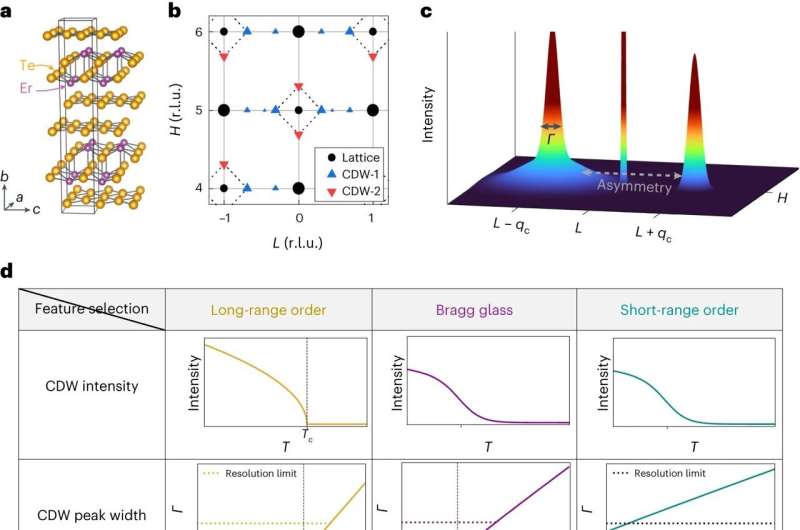Phys.org February 9, 2024
Detecting the Bragg glass phase has been challenging despite its sharp theoretical definition in terms of diverging correlation lengths. A team of researchers in the US (Cornell University, Stanford University, National Accelerator Laboratory, Argonne National Laboratory provided bulk probe evidence supporting a Bragg glass phase in the systematically disordered charge-density-wave material of PdxErTe3. They established a diverging correlation length in samples with moderate intercalation over a wide temperature range. According to the researchers their work advances our understanding of the complex interplay between disorder and fluctuation and the use of their analysis technique to target fluctuations through a high-throughput measure of peak spread could revolutionize the study of fluctuations in scattering experiments… read more. Open Access TECHNICAL ARTICLE

CDWs in PdxErTe3. Credit: Nature Physics , February 9, 2024